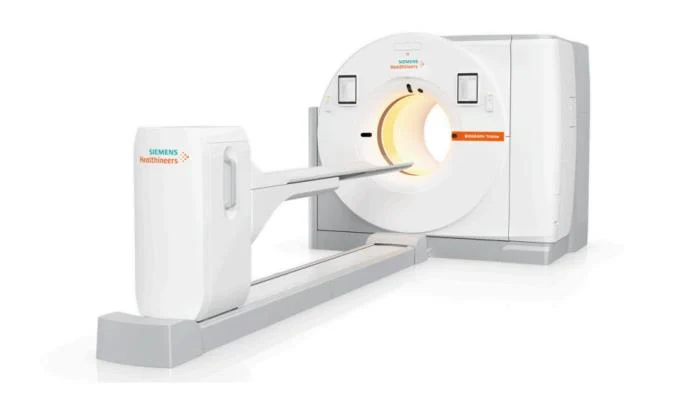What’s New in PET/CT
Metabolic and volume-based parameters of (18F)FDG PET/CT for primary mass and axillary lymph node metastasis in patients with invasive ductal carcinoma: a retrospective analysis in relation to molecular subtype, axillary lymph node metastasis and immunohistochemistry and inflammatory markers.
PET/CT Updates, Research & Education
October 2019
Purpose
To evaluate metabolic and volume-based parameters of 18-Fluorodeoxyglucose positron emission tomography/computed tomography ((F)FDG PET/CT) for primary mass and axillary lymph node (ALN) metastasis in relation to molecular subtype, and immunohistochemistry and inflammatory markers in patients with invasive ductal carcinoma.
Methods
A total of 129 patients (mean±SD age: 49.2±13.0 years) with invasive ductal breast cancer who had (F)FDG PET/CT imaging prior to chemotherapy or surgery were included in this single-center retrospective study. Data on patient age, molecular subtype, ALN metastasis status, inflammatory markers, immunohistochemistry markers and (F)FDG PET/CT imaging parameters for primary mass and ALN were recorded.
Results
ALN metastasis was evident in 52.7% of patients and associated with significantly higher median diameter (P=0.027), MTV (P<0.001) and TLG (P<0.001). NLR was positively correlated with all primary mass (p ranged from 0.041 to 0.001) and ALN (P ranged from 0.026 to <0.001) PET parameters. PET parameters did not change with respect to molecular subtype or immunohistochemistry markers. Primary mass and ALN metastasis PET parameters showed significant positive correlations for TLG (r=0.274, P=0.001) and SUVmax (r=0.358, P<0.001).
Conclusion
In conclusion, our findings in a retrospective cohort of invasive ductal breast cancer patients revealed primary mass PET parameters to significantly differ with respect to ALN metastasis status and NLR levels, but not according to molecular subtype or immunohistochemistry markers. Accordingly, our findings highlight the value of acquisition of preoperative PET/CT imaging and role of both metabolic and volume-based parameters in predicting aggressiveness of the tumor as correlated with presence of ALN metastasis and high NLR.
Source: ANucl Med Commun. 2019 Oct;40(10):1051-1059. doi: 10.1097/MNM.0000000000001074.
< https://www.ncbi.nlm.nih.gov/pubmed/31365497 > Retrieved 30 September 2019.

October Breast Cancer Awareness
- In the U.S. in 2019, there will be an estimated 271,270 new cases of invasive breast cancer diagnosed in women and 2,670 cases diagnosed in men
- 62% of breast cancer cases are diagnosed at a localized stage, for which the 5-year survival rate is 99%
- Death rates from breast cancer have been declining since about 1990, in part due to better screening and early detection, increased awareness, and continually improving treatment options
Connect with Us
Get additional information and stay up-to-date with the latest news by connecting with us on social media.



